Year-end digital advertising and marketing survey from the 614 Group and AdMonsters offers insights and predictions on viewability, ad fraud, programmatic, native advertising, and more.
When asked which issues are expected to be "digital publishing's biggest challenge" in 2015, viewability was the top pick (63%), according to a survey of interactive media and advertising executives conducted by The 614 Group, a global digital consultancy, and AdMonsters, a professional community and conference series for digital ad operations and technology leaders. Underscoring that selection, almost seven out of 10 of those polled stated they do not believe a majority of digital publishers will achieve high viewability delivery by the end of 2015.
Ad fraud was cited as a distant second when it comes challenges on the horizon, with 26 percent calling it out as a chief concern for 2015. Even though ad fraud took a back seat to viewability, respondents were relatively mixed on the question of whether the industry would witness a decrease in ad fraud next year due to new technologies and other efforts; 58 percent predicted a drop in ad fraud, while 42 percent did not.
Programmatic
An impressive 81 percent of respondents believe the growth of programmatic systems for buying and selling of advertising has driven the broader interactive marketplace ahead during the past year. However, an equally strong number, 84 percent, believe work still needs to be done to realize the promise of industry advances created by programmatic trading - if it is going to continue to have a meaningful impact in 2015.
Native Advertising
Consequently, and in line with those numbers, 30 percent of respondents believe native ads will be "very pervasive" in the coming year, while more than 60 percent felt native ads will be "somewhat" pervasive; and 11 percent do not believe native will be pervasive at all.
Native advertising represents another form of media monetization, and media and marketing leaders were less in agreement about whether or not this new ad category signals a dramatic – and necessary – shift away from standard ad units. In response to the question, "How much do you agree that this year's industry-wide focus on native advertising has demonstrated that standard ad units as they currently exist will not support our whole industry?", slightly more than a third (35%) "strongly" agreed, half (52%) somewhat agreed, and 12 percent said "not at all."
Pricing
Since concerns about maintaining pricing are a major factor for publishers when considering whether to make their ad inventory available through programmatic channels, the survey also asked respondents to cite the average difference in ad unit pricing between their programmatic activities and those transactions happening with their direct teams. Only 16 percent stated the pricing for both was equal, while 32 percent placed the pricing gap between programmatic and direct at 20 percent lower for programmatic. In addition, 40 percent responded that programmatic inventory was priced at least 50 percent lower than direct-sold inventory.
"As Kavata Mbondo, Yield Management and Programmatic Solutions at Time Inc., said at our Dec. 4 meetup, 'the big secret of programmatic is that it's manual'", said Rob Beeler, Editor In Chief, AdMonsters. "Programmatic ad trading is creating some efficiencies, but we still have a long way to go before programmatic trading has a truly transformative impact for publishers. In the meantime, they will explore other revenue approaches – like native advertising – to make up for revenue shortfalls. But the survey results confirm that native isn't a fit for all publishers and all marketers. Publishers will need to come up with new ways to develop revenue. We at AdMonsters look forward to continuing to engage and support leaders in digital advertising and publishing in all these areas in the coming year."
63% of interactive media and advertising executives expect viewability to be digital publishing's biggest challenge in 2015.
"Our survey results should serve as insightful analysis for companies that are already in the strategic and planning phases for 2015," said Rob Rasko, CEO and Founder, The 614 Group. "Some of the polling results were expected, but it's always important to see the experts confirming some our own impressions of marketplace trends. The biggest surprise was the level of agreement around the idea that publishers would not be 'majority viewable,' in 2015. There are no reputable publishers who wish to sell ads that aren't seen, and with continued effort and emphasis, I disagree with this poll question's outcome. Let's stay tuned and see what actually happens."
Methodology
Conducted by The 614 Group and AdMonsters between November 24 and December 3, 2014, the online survey garnered more than 300 digital advertising, media and marketing leader and stakeholder responses.


